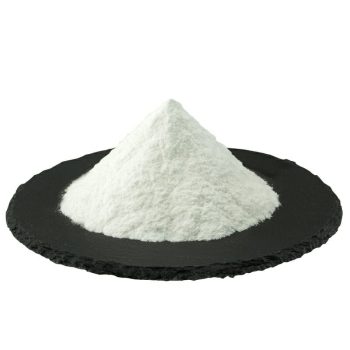CAS 9001-57-4 Food Additives 1 Kg Enzyme Invertase Powder Bulk Invertase Enzyme
| Main Ingredient | Invertase enzyme, is a β-D-fructofuranoside fructohydrolase (EC.3.2.1.26) that catalyzes the hydrolysis of the β-D-fructofuranosidic bond in non-reducing sugar with relative specificity. It can not only catalyze the hydrolysis of the sucrose to produce glucose and fructose but also the raffinose to produce melibiose and fructose. |
| Function | Enzyme. It mainly decomposes sucrose into invert sugar, so as to obtain a high-concentration sugar liquid with higher solubility than sucrose and not easy to crystallize. It is used in ice cream, liquid chocolate, candied fruit, various candies, jams, etc. It is also used to produce artificial honey and remove sucrose from food. |
| CAS No | 9001-57-4 |
| Molecular Formula | C5H10Br2O2 |
| Formula Weight | 261.940 |
| Density | 2.0±0.1 g/cm3 |
| Boiling Point | 370.9±42.0 °C at 760 mmHg |
| Melting Point | N/A |
| Temp | 30 °C ~ 70 °C; optimum 50 °C ~ 60 °C |
| Colour | White or yellowish |
| Specification | 30,000 U/G. One unit of invertase equals to the amount of the enzyme which hydrolyzes the sucrose to produce 1μmol glucose in 1 min under test condition. |
| pH | 3.0-7.0; optimum 4.0-5.0 |
| Application Fields | Health Care Products, Food Supplements, Medicine |
Using Effects
Invertase, named as Saccharase, fructofuranoside fructohydrolase (EC.3.2.1.26). This product was produced by Saccharomyces cerevisiae strain, which fermented in the submerged medium. Saccharase could be used as the additives, ingredients, and the catalyzer in the fields of food, beverage, alcohol fermentation, and pharmaceutical preparation, etc.
Invertase is a yeast-derived enzyme, which carries out hydrolysis of terminal non-reducing β-D-fructofuranoside residues in β-D-fructofuranosides. Invertase splits sucrose into glucose and fructose (invert syrup) and can be applied for any inversion of sucrose especially liquefied cherry centers, creams, mints, truffles, marshmallow, invert syrup and other fondants. Invertase is used to improve the shelf life of confections.
Application:
• Used for the production of fructose syrup, which significantly improves the technology level.
• Used for the alcoholic fermentation, which could improve the starch conversation rate when added after the starch saccharification process.
• Used for the improvement of bread flour, which could improve the bread color.
• Used for the production of ice cream, chocolate, preserved fruit, candies, jam and so on, which could prevent the sugar from crystallization.
• Used for the production of artificial honey and the removal of sucrose from foods.
Dosage:
350 g sucrase was added to 1 ton sugar syrup (70%, 50 °C) and completely hydrolyzed within 6 hours. If you want to reduce the cost, 150 g sucrase can be added to 1 ton sugarcane syrup (70%, 50 °C) and can be hydrolyzed within 20 hours. For the different quality of the substrate and technical parameters, the optimum dosage should be determined after test.
Shelf Life:
25 °C, 12 months. Below 15 °C, 18 months. Increase dosage after shelf life.
Storage:
The product should be transported and stored at a cool and dry place, avoiding sunlight.
Safety:
Enzyme preparations belong to protein, which may induce sensitization and cause allergic-type reactions in sensitized individuals. Prolonged contact may cause minor irritation for skin, eyes, or mucous membrane of the nose, so any direct contiguity with the human body should be avoided. If irritation or allergic response for skin or eyes develops, consult a doctor.








